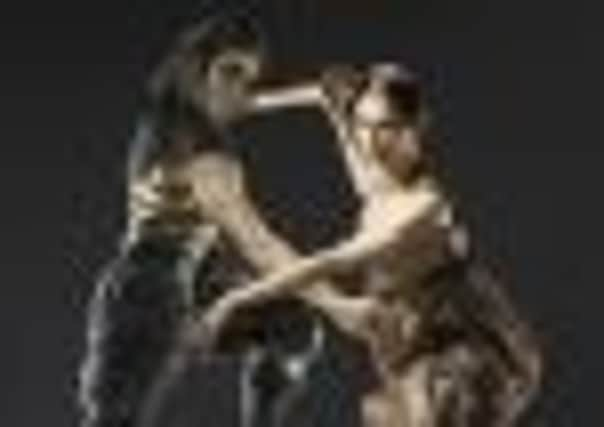Traditional fairytale becomes ballet with a modern twist


AS stories go, they don’t get much more classic than Beauty and the Beast.
Ever since it first appeared in print back in the mid-18th century, this traditional fairytale has captivated generations of people with its timeless message of good triumphing over evil. There have been some enduring adaptations over the years, from Jean Cocteau’s 1946 film La Belle et la Bete, to Walt Disney’s 1991 musical animation version and even the Shrek films which have given the story a postmodern makeover.
Advertisement
Hide AdAdvertisement
Hide AdNow, Northern Ballet is following up the success it enjoyed with Cleopatra earlier this year with a new production of Beauty and the Beast choreographed by its artistic director David Nixon.
“I wanted to create a family show which would be equally popular with children and adults,” he says. “This is not an adaptation of the Disney version of the story – it is based on the original tale and will embrace the darker elements of the tale as well as the lighter moments.
“We wanted a family show but not one specific to Christmas because even something like Peter Pan doesn’t work as well outside the Christmas period and we wanted something we could perform at different times of the year.” The production, which premieres at Leeds Grand next week before going on a national tour in March, is accompanied by a beguiling score featuring pieces by Bizet, Debussy and Saint-Saens.
“I always go back to tales before Disney to find out where the stories come from. There are some wonderful Arabian versions of Beauty and the Beast that are quite dark but have a clear message. One version that inspired me years ago was the Cocteau movie which is wonderful, but that’s more for adults and I wanted to do something different,” says Nixon.
Advertisement
Hide AdAdvertisement
Hide AdHe wanted to give this classic fairytale a contemporary feel. “I was interested in how these ideas could apply to the world today. So the opening sequence looks like Made in Chelsea, or one of those reality TV shows, as well as a bit of a 50s look. It’s about how you look and being cool and yet into that I bring these fairies and sprites and goblins that everyone recognises from the story,” he says. “I wanted to use this idea of retail therapy and haute couture, so you see the girls coming home from their shopping trip with stacks of boxes and giant receipts and this led me to bring into the story this whole idea of debt. The father can’t pay these bills and the debt collectors come in from Gucci and they take the family home away and the family is left on the street.”
Nixon has designed virtually all the costumes to his ballets over the years and he’s gone to town with some deliberately extravagant outfits for Beauty and the Beast. “I love fabrics and playing with textures and colours because it helps me understand the characters and how they move.”
He’s also brought dream sequences into the story. “I’ve brought dream elements in which might go over some of the children’s heads, but the music is always beautiful and there’s always something visual for the children to hang on to.”
So what does he think is the enduring appeal of this fairytale? “The fact that underneath it all, it’s a love story. Also, because you have beauty and a beast there’s another masculine element to the story. I think something like Cinderella can be much more just for girls, whereas this is something that boys can empathise with too. Plus it’s an easy story and a happy story and what’s not to like about that?”
Advertisement
Hide AdAdvertisement
Hide AdBeauty and The Beast, Leeds Grand, Dec 17- 31. 0844 848 2701 www.leedsgrandtheatre.com
A beauty of a ballet
Beauty and the Beast tells the story of a young prince who is transformed into a beast as a punishment for his arrogance and cursed to live alone in his castle until the spell is broken by the sacrifice of true love.
In Beauty’s presence the Beast remembers the joy he once had and his willingness to sacrifice his life for her permits his final transformation back to a handsome Prince.
Variations of this classic fairytale were told across Europe and the Middle East during the 19th century and its themes – centred around the battle between the forces of good and evil – have been used for the basis of countless films, ballets and operas.
Above all, its enduring appeal lies in the idea that love can conquer all and for many people it remains the greatest love story ever told.